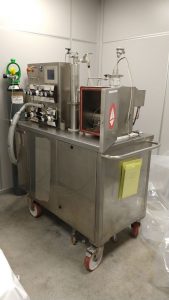 Micronization has the purpose of protecting those molecules that would otherwise rapidly deteriorate becoming ineffective and therefore make them more bioavailable. By using some excipients, usually long chain fatty acids, individual droplets of oils rich in molecules of interest are coated in order to obtain a powder (size of micrometers) with which tablets or liquid products with particles in suspension can be prepared.
Micronization has the purpose of protecting those molecules that would otherwise rapidly deteriorate becoming ineffective and therefore make them more bioavailable. By using some excipients, usually long chain fatty acids, individual droplets of oils rich in molecules of interest are coated in order to obtain a powder (size of micrometers) with which tablets or liquid products with particles in suspension can be prepared.
With the same process, products can be made from molecules that are easily perishable and difficult to absorb by the body, which are therefore poorly bioavailable or bioassimilable. The use of appropriate excipients and a correct formulation allows to significantly increase the bioabsorption of the molecule in order to make it more useful for the body. The micronization process can also guarantee the controlled and targeted release of the molecule in the area of interest. In fact, by evaluating the chemical-physical characteristics present in the desired release area, a mix of excipients can be built ad hoc which allows the release of the molecule of interest only where required.


